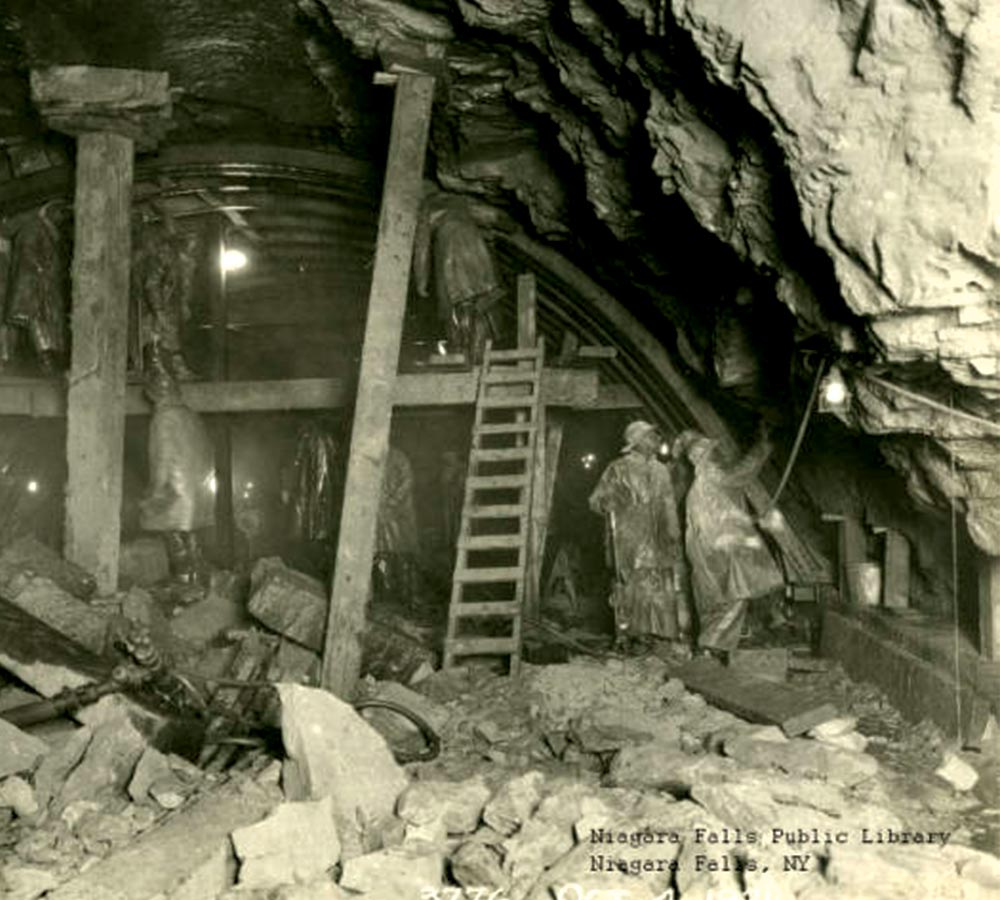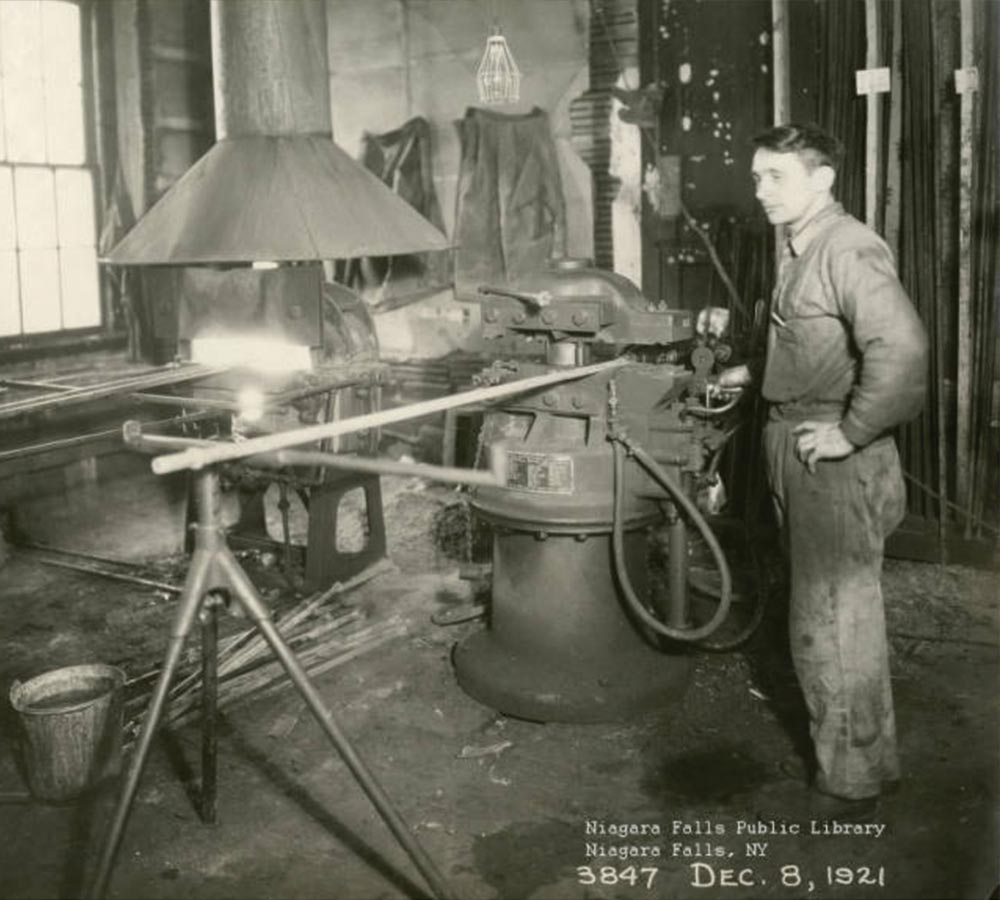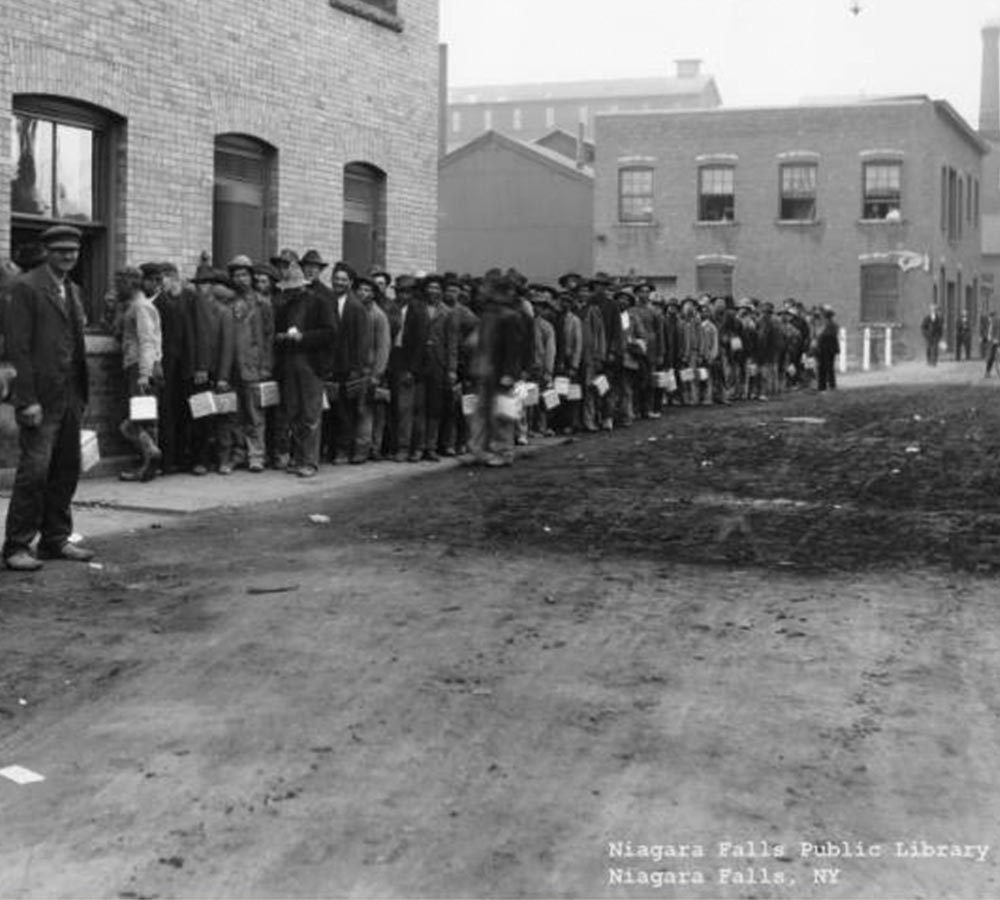First-hand perspectives
What it was like working at the plant when it opened?
When the power station opened in 1905, it was only 296 feet long. Although wheelpits had been dug for 11 generators, only two were in place when the power station first opened. Generator parts were scattered around the plant, awaiting the cranes to lift them into place. The area was still a construction site that posed many safety hazards. However, in an age without hard hats, steel-toed boots and five-point harnesses, it was largely up to workers to ensure their own safety and the safety of those around them.
In the beginning, every area of operation took place on the power station’s main floor, from control operations to the clerical work. Workers were also stationed on each of the eight decks below the power station’s main floor. At that time, the decks were only accessible by ladder and an elevator that was often down for repairs. Workers that needed to access the decks when the elevator was down would have to carry tools and equipment on ladders that could be slick with oil, or ice. Working on the underground decks was cold and damp, regardless of the season.
Cold and dampness were only two of the many inconveniences workers on the decks faced daily. Poor lighting, loud sounds and unpleasant smells were also part of the job. With minimal natural light entering the underground decks, workers had to rely on lanterns and light filtered from the main floor to do their jobs; lighting fixtures would only be installed many years after the plant opened. The sound of water going through the penstocks would also have echoed quite loudly. The smell of oil and the passing river water permeated through the air.
Over the next 19 years, additional generators were installed, and energy production started. Eventually, a full second level, office attic and full-fledged, state-of-the-art control room were added to the power station.
Labour Revolt
On November 2, 1903, the “Canadian Niagara Power Company”, the Ontario Power Company and the Electrical Development Company all reduced hourly rates for labourers working in dry places from $1.75 to $1.50. Those that worked in wet and hazardous places continued to receive an hourly rate of $1.75. When workers began comparing their wages with railroad workers, who were less skilled labourers, they identified a substantial pay disparity. This triggered a workforce strike.
Workers at the Ontario Power Company and Electrical Development Company were the first to strike. Although many “Canadian Niagara Power” workers agreed that the hourly rate reduction and pay disparity were unfair, they were generally happy with the company overall and decided to carry on with the construction of the power station. Workers from the other companies did not approve of this and came to the site to revolt. They threw rocks and dirt down the wheelpit and tunnel excavation sites. By later that day, between 700 and 800 labourers were marching around the area and work at all three jobsites came to a halt.
On the second day of the strike, non-strikers employed by the “Canadian Niagara Power Company” were attacked again at the construction site. This time, strikers arrived with revolvers. The militia were called and approached the strikers with bayonets affixed to their rifles, forcing them to disperse. By the end of the day, 20 men were jailed and charged with inciting a riot; an additional 75 to 100 were also missing. The rest of the workers returned to their respective jobsites and the strike ended.



